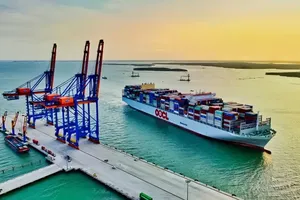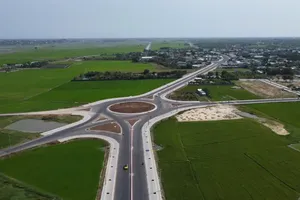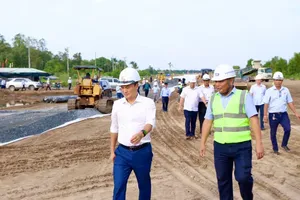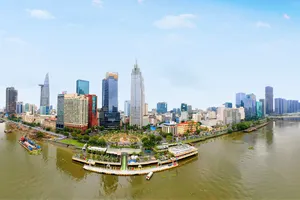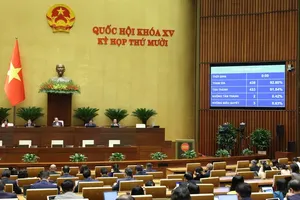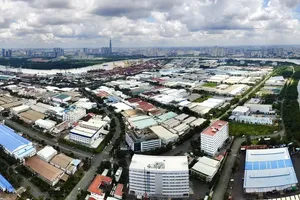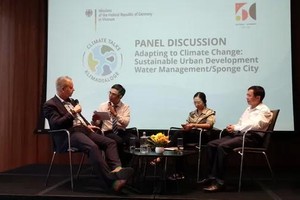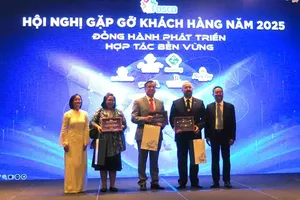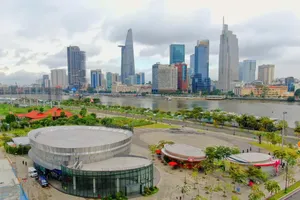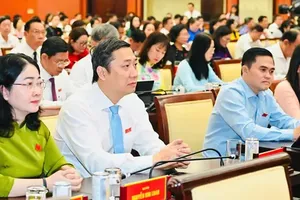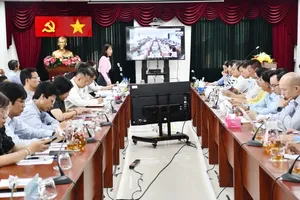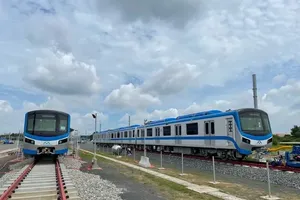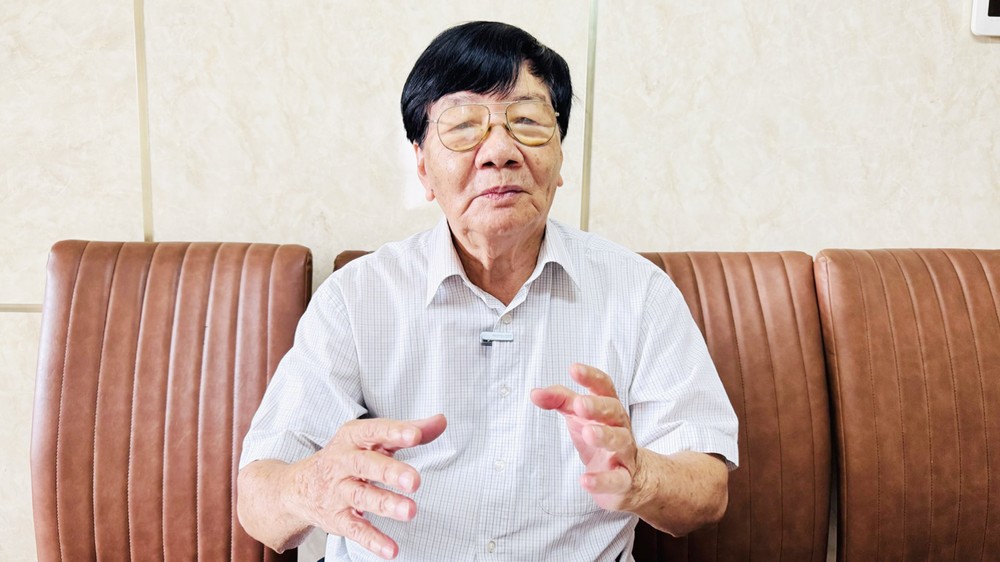
Over the past 50 years since Vietnam's reunification, Ho Chi Minh City has undergone significant changes, particularly in its urban traffic infrastructure. Visitors to the city today would notice a stark contrast compared to the early post-reunification period.
Although it cannot be compared with developed countries, modern traffic works have been and are being built, contributing to creating the image of HCMC. From an urban perspective, SGGP's reporter had a conversation with expert Nguyen Huu Nguyen from the HCMC Urban Planning and Development Association (VUPDA).
Expert Nguyen Huu Nguyen said that in general, the traffic infrastructure in Ho Chi Minh City has developed greatly. The southern largest city today has many overpasses at many major intersections, has the 20km long metro line No. 1. Many roads have been renovated and expanded, with more cameras to monitor and control traffic with a reasonable traffic signal system. However, admittedly, urban traffic is still one of the problems that has not been thoroughly solved.
Ho Chi Minh City leaders have assigned the Institute for Development Studies to carry out the topic ‘Synchronization of traffic infrastructure and housing projects’.
He noted that traffic has long been designated as one of Ho Chi Minh City's seven ‘breakthrough programs’ yet it remains a persistent challenge. The core of the issue lies in the imbalance between the limited land area allocated for traffic — just over 10 percent, whereas over 20 percent is needed — and the overwhelming number of vehicles, with more than 7 million motorbikes and over 1 million motor vehicles of various types.
It is not difficult to understand that with "few roads and many vehicles," congestion is inevitable, much like "small rivers cannot contain large volumes of water," leading to overflowing and flooding. This situation ultimately stems from the city's overburdened urban infrastructure, largely driven by a high population density concentrated in the inner city.
However, population reduction is not a viable solution, given the city's aspirational target of 15 million inhabitants. Similarly, decreasing the number of vehicles is not feasible, as they constitute essential means of production.
Ho Chi Minh City should develop a multi-storey elevated road and railway system and exploit more river transport, because the land fund in the inner city is very limited. The city should also increase the use of digital devices and artificial intelligence for controlling and operating the traffic system. Developing a synchronous and balanced traffic infrastructure is a fundamental solution to improve the traffic situation. Loosening traffic restrictions would exacerbate the city's traffic woes, as resolving the issue requires a long-term, comprehensive approach.
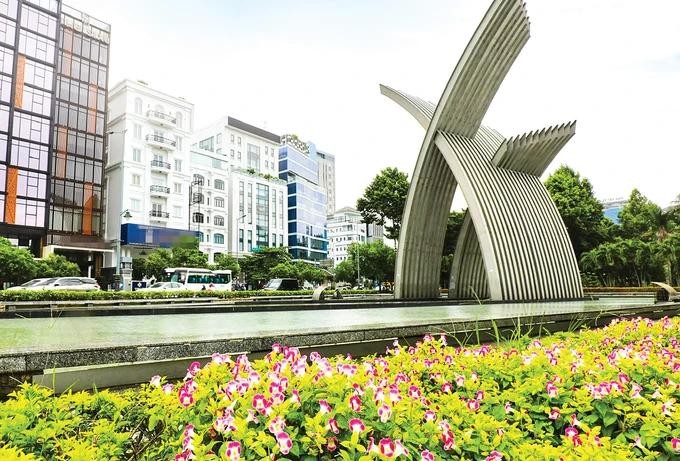
Economic growth and social development are two inseparable aspects. Economy creates material wealth, while society creates a harmonious life in terms of material and spiritual life for the people. Urban infrastructure includes many parts, the most important of which are architectural infrastructure, housing and traffic infrastructure. Ho Chi Minh City has many modern high-rise buildings catering to high-income earners, but there remains a lack of social housing for workers and low-income residents. In the next five years, the city's key priority is to relocate approximately 40,000 houses along and on canals to newly constructed affordable social housing settlements for low-income earners.
Despite three decades of implementation, the canal-side housing relocation plan has achieved only 50 percent completion. The success of Ho Chi Minh City's socio-economic development is ultimately evaluated by the tangible and intangible benefits experienced by its residents, a factor considered more significant than the mere modernity of urban infrastructure. The Prime Minister has recently approved the planning framework for Ho Chi Minh City for the period 2021-2030, with a vision extending to 2050. Accordingly, the orientation is to become a super city with about 14-15 million people.
The "core" role of Ho Chi Minh City is defined by a two-way interaction. On one hand, the southern largest city extends its influence to surrounding provinces through investment capital, technology transfer, urbanization expertise, transportation, and logistics development. On the other hand, these provinces supply labor, raw materials, markets, and trade opportunities.
In other words, for the southern metropolis to achieve rapid and sustainable growth, it must foster strong connections and cooperation with the Southern provinces. Among these linkages, transportation infrastructure is particularly critical, as Ho Chi Minh City serves as a major domestic and international hub for road, waterway, rail, and air transport.
However, Ho Chi Minh City's ambition to reach a population of 14–15 million presents a different set of challenges. It is essential to study the experiences of global megacities to understand the complex issues they face. At the same time, research increasingly shows that population size alone is not the defining feature of a modern city; rather, it is the concept of a livable city - characterized by a high quality of life, that matters most.
It is also important to note that the city's planning strategy clearly emphasizes a transition toward a green economy and a digital economy. Special focus is placed on developing Ho Chi Minh City's marine economy through initiatives such as the Can Gio International Transit Port, the Can Gio coastal urban area, and the harnessing of offshore wind power in Can Gio outlying district — all aligned with the broader goal of achieving carbon neutrality. This direction reflects an irreversible global trend.

)
